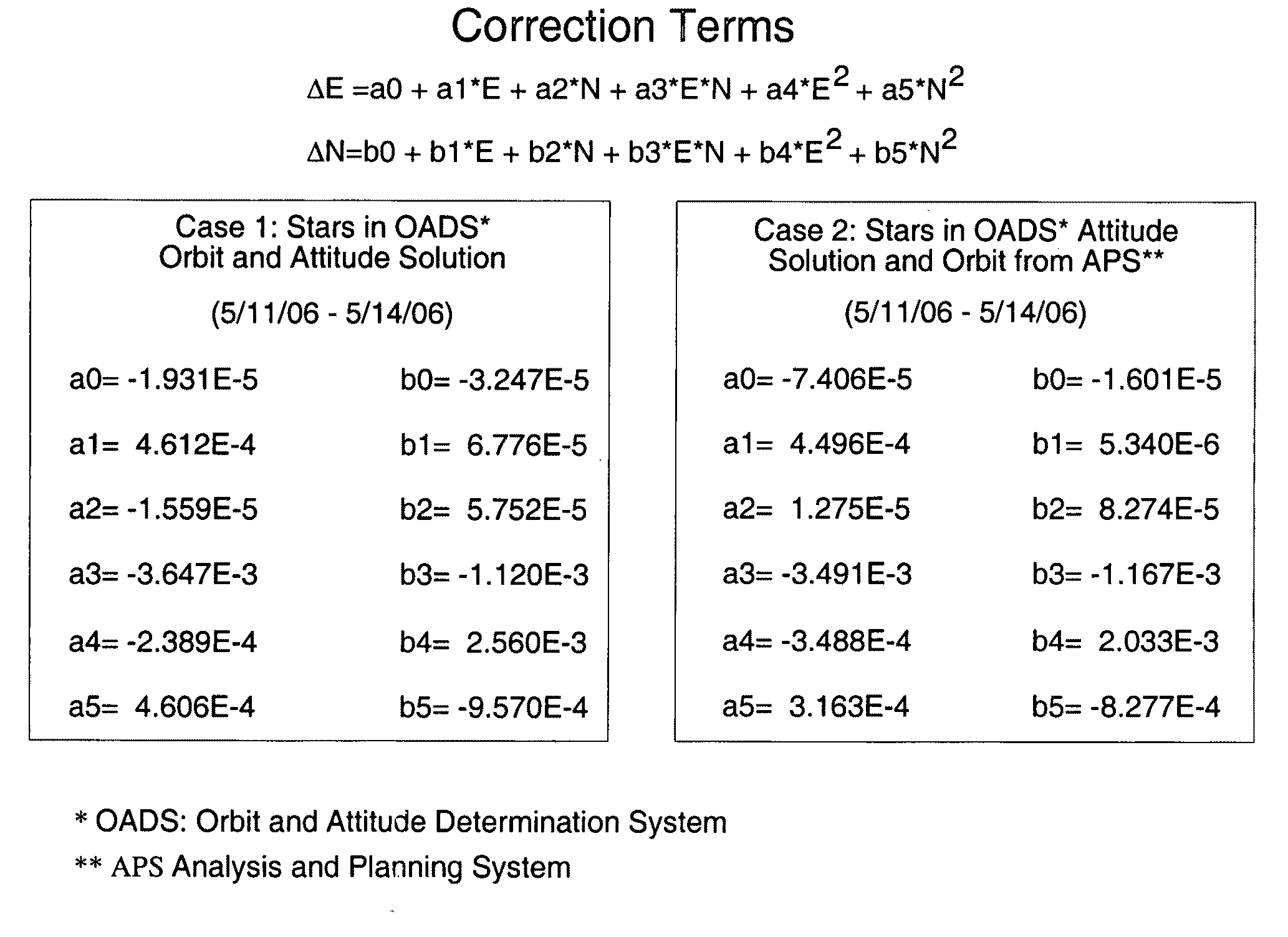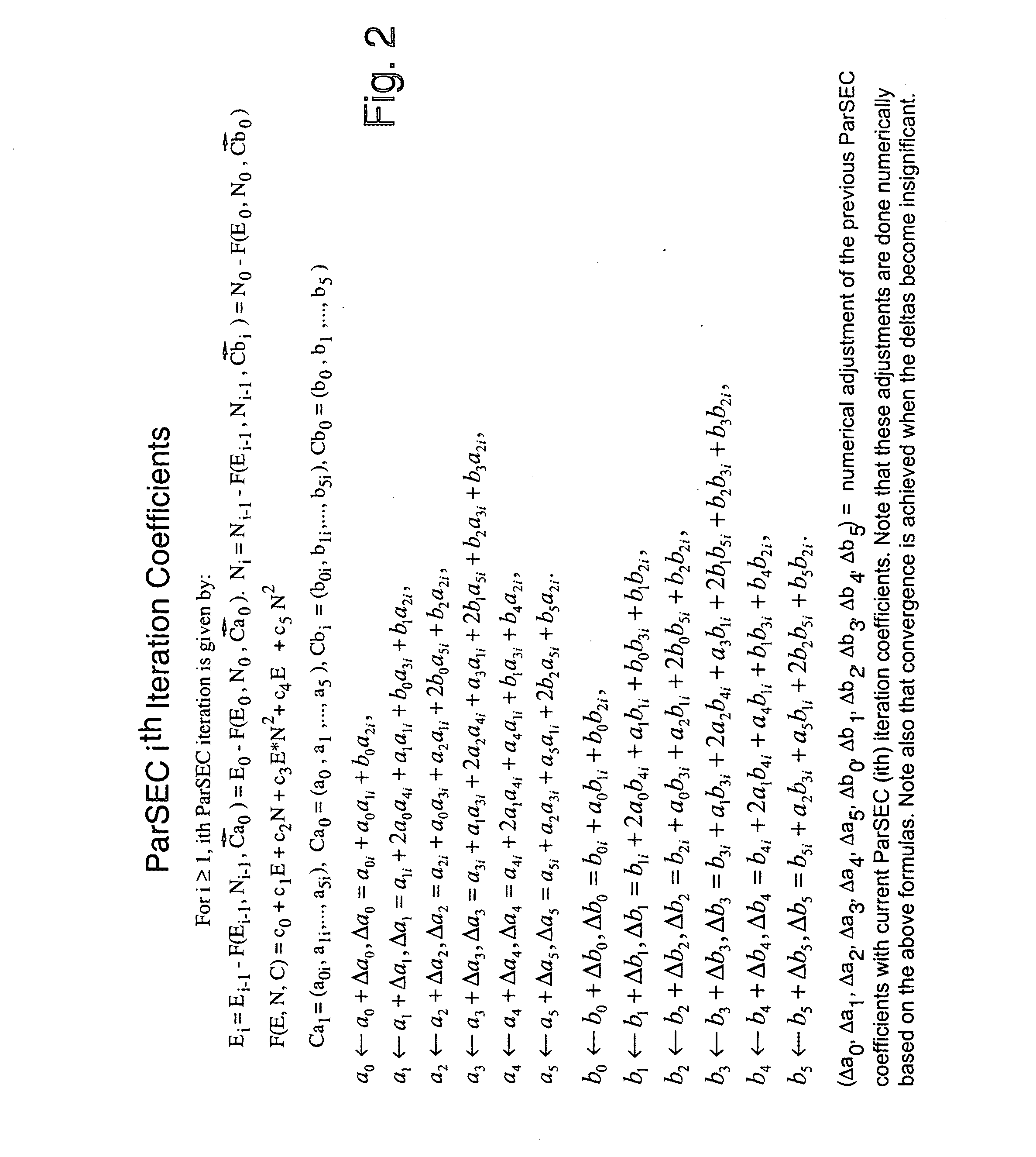Image navigation and registration accuracy improvement using parametric systematic error correction
a system of error correction and image navigation technology, applied in the field of global observation methods and systems, can solve the problems of coarse attitude accuracy, requiring greater accuracy, and cost of the equipment required to detect faint star light and maintain the star tabl
- Summary
- Abstract
- Description
- Claims
- Application Information
AI Technical Summary
Benefits of technology
Problems solved by technology
Method used
Image
Examples
Embodiment Construction
[0058]In FIG. 1 there is depicted a block diagram of the method and system of the instant invention. Therein there is seen the ParSEC iteration process of the instant invention wherein coordinate data for stars (Eo, No), visible and IR landmarks (Eo, No) and range are transmitted to an orbit and attitude determination system (OADS) (10). The OADS output is directed to an orbit and attitude solution (O&A) (90) and (100) which contains the iteration measurement residuals Ei−1−Ep,i−1, Ni−1−Np,i−1 relating to stars (Eo, No), and visible and IR landmarks (Eo, No) to be processed by the ParSEC (Ei, Ni) vs. (Ei−1, Ni−1) coefficient determination algorithm (140) of the instant invention. The ParSEC coefficients are thus generated (150) representing the ith ParSEC iteration which is inputted to the ParSEC EiNi vs. Eo, No coefficient determination algorithm (160). The output from (160) is then inputted as the i−1 iteration ParSEC solution (80) to the OADS (10) to improve the O&A solution (90)...
PUM
 Login to View More
Login to View More Abstract
Description
Claims
Application Information
 Login to View More
Login to View More - R&D
- Intellectual Property
- Life Sciences
- Materials
- Tech Scout
- Unparalleled Data Quality
- Higher Quality Content
- 60% Fewer Hallucinations
Browse by: Latest US Patents, China's latest patents, Technical Efficacy Thesaurus, Application Domain, Technology Topic, Popular Technical Reports.
© 2025 PatSnap. All rights reserved.Legal|Privacy policy|Modern Slavery Act Transparency Statement|Sitemap|About US| Contact US: help@patsnap.com



